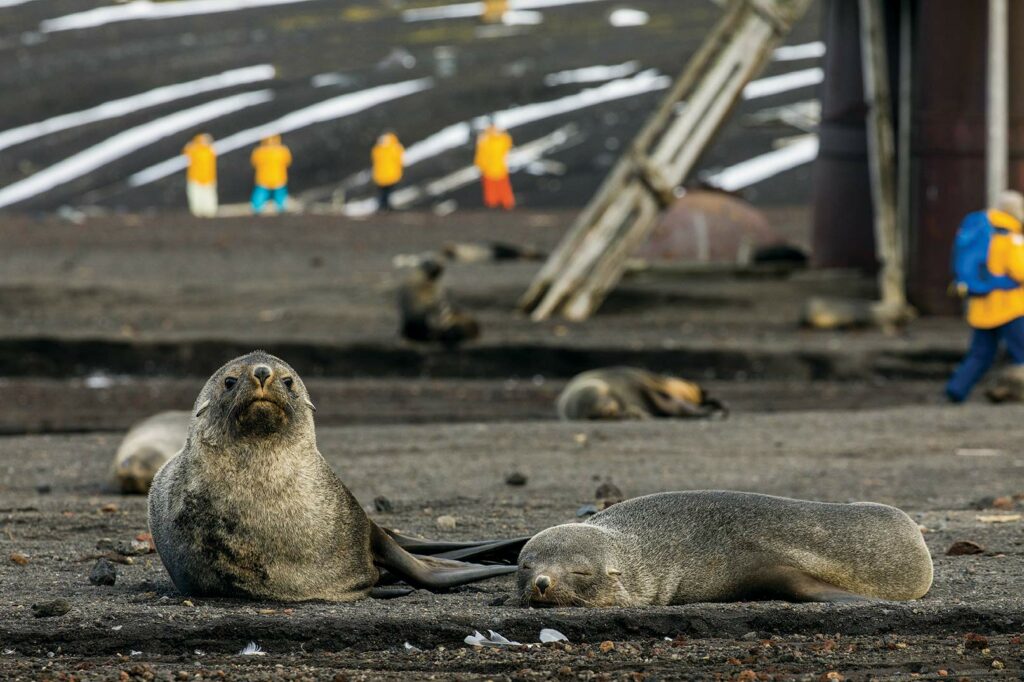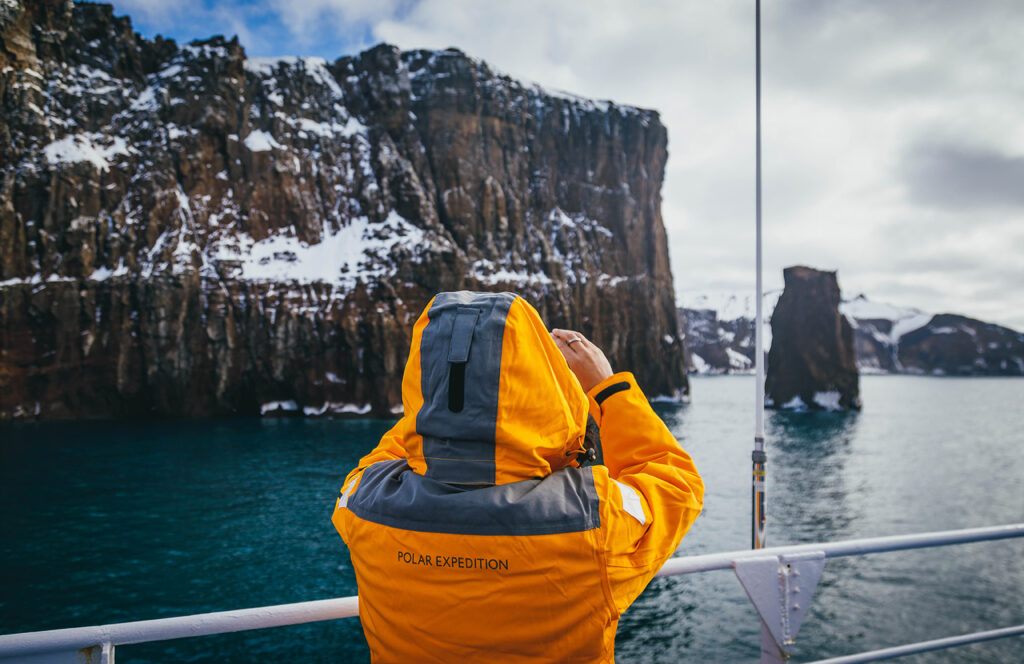This island is located in the South Shetland Islands and is a popular landing site for tourists due to its large colonies of chinstrap penguins and fur seals. Visitors can also see Weddell seals, Antarctic terns, and other seabirds.
The South Shetland Islands are a group of islands located north of the Antarctic Peninsula. The region consists of 11 major islands and numerous smaller ones. The islands are largely mountainous and glaciated. The islands are made of volcanic materials. Although the islands might have been sighted before, the first recorded sighting is that of William Smith, a British sailor whose ship was blown off course while rounding Cape Horn in 1819. Soon after, seal hunters frequented the islands in search of Fur Seals.
This island is located in the South Shetland Islands and is a popular landing site for tourists due to its large colonies of chinstrap penguins and fur seals. Visitors can also see Weddell seals, Antarctic terns, and other seabirds.
This is a volcanic island with a large caldera that forms a natural harbor. It was once home to a whaling station and is now a popular landing site for tourists. Visitors can explore the ruins of the whaling station and take a dip in the geothermal waters of Pendulum Cove. The island is also home to a large colony of chinstrap penguins.
This group of islands is home to a large colony of gentoo penguins, as well as a variety of seabirds including southern giant petrels, skuas, and Antarctic terns. Visitors can also see Weddell and elephant seals lounging on the beaches.
This is a sheltered bay located on the west coast of the Antarctic Peninsula. It is a popular landing site for cruises due to its large colony of Gentoo penguins, as well as its scenic views of glaciers and snow-capped mountains.
This is the largest of the South Shetland Islands and is home to several scientific research stations. Visitors can explore the research facilities and learn about the important work being done to study the Antarctic environment. The island is also home to several species of penguins, including Adelie, chinstrap, and gentoo.
This island is home to several historic sites, including the remains of a 19th-century British sealing station and a monument to Soviet Antarctic explorers. Visitors can also see a variety of wildlife, including chinstrap and gentoo penguins, Antarctic terns, and southern giant petrels.
This small, rugged island is famous for its association with the story of Sir Ernest Shackleton’s ill-fated Antarctic expedition. Visitors can see the spot where Shackleton and his crew were stranded for months and learn about their incredible survival story. The island is also home to a large colony of chinstrap penguins.
This is a scenic point on the south coast of Livingston Island. Visitors can see a variety of wildlife, including chinstrap and gentoo penguins, elephant seals, and Antarctic fur seals. The site is also known for its scenic views of icebergs and glaciers.
This small island is located off the coast of the Antarctic Peninsula and is a popular landing site for visitors. It is home to a large colony of gentoo penguins, as well as several other species of seabirds. Visitors can also see Weddell seals and elephant seals basking on the beaches.
This small island is located off the coast of King George Island and is home to a large colony of chinstrap penguins. Visitors can observe the penguins in their natural habitat and learn about their behavior and life cycle.
Here you can expect to see huge penguin rookeries and several seal species lounging on land. On King George Island, you can see Adélie and Chinstrap penguin colonies, as well as Kelp Gulls, Blue-eyed Cormorants, Antarctic Terns and Southern Giant Petrels.
The average summer temperature only reaches 1.5 degrees Celsius (34.7 degrees Fahrenheit), and the typical winter temperature hovers around -5 degrees Celsius (23 degrees Fahrenheit). Even in the summertime, the South Shetland Islands retain an ice and snow coverage of about 80 percent.
Cruises operate between late October and the end of March. Each month has its own characteristics and nuances, so there's no real 'best time' to visit, however there is a high season and shoulder season. High season is late December to early February when days are long, the weather is the most stable and wildlife the most active. However, spring (late October and November) has lots of offer, with heavier ice and the chance of being one of the first down to Antarctica for that year. Later in the season, the softer light of March is excellent for photographers, and you've got higher chances of whale sightings.
After it’s discovery, the waters of Antarctica became profitable for whale hunters from a multitude of countries. For decades the whalers would hunt whales by chasing them in small boats and processing them for the oil that was stored in giant tanks until transported to be used in industrialized countries for lamp oil, and industrial processes including soaps and cosmetics. Many other by-products were harvested as well, including baleen, which was used for buggy whips, corset stays, and hoops for women’s skirts. Remains of a whaling row boat

Many whale species have been hunted nearly to distinction, making the practice a hotbed of contention, with only a few countries still participating in harvesting these mammals for the restaurant trade. A cruise to Antarctica may include a stop at a historic whaling station, such as Whaler’s Bay on Deception Island, in the South Shetland Islands, or Elephant Island, where Shackleton’s crew spent 4 months waiting to be rescued. You might see abandoned tanks, buildings, and even boats in the harbors.

Contact Polar Holidays to schedule a free consultation with one of our booking specialists today!